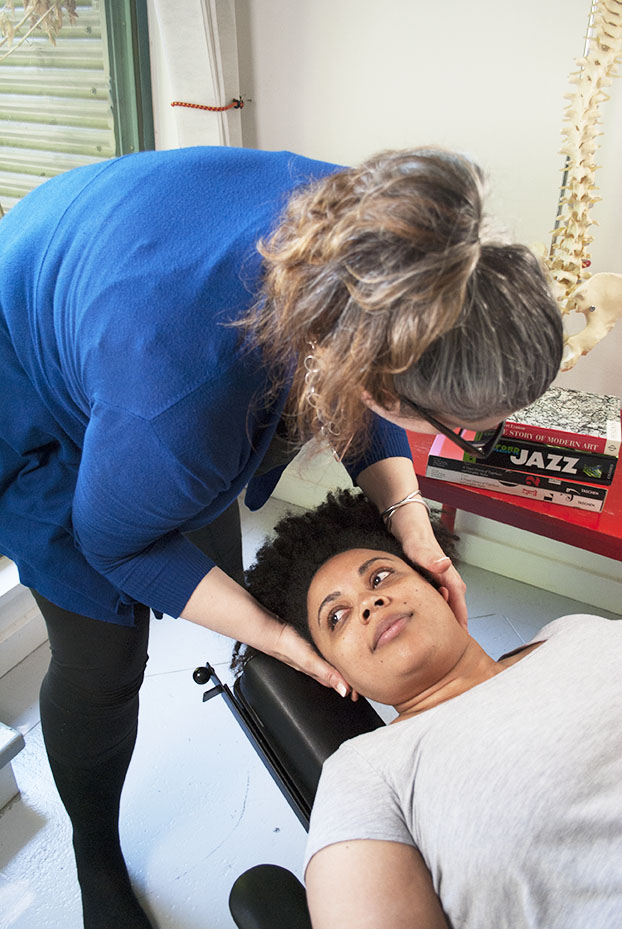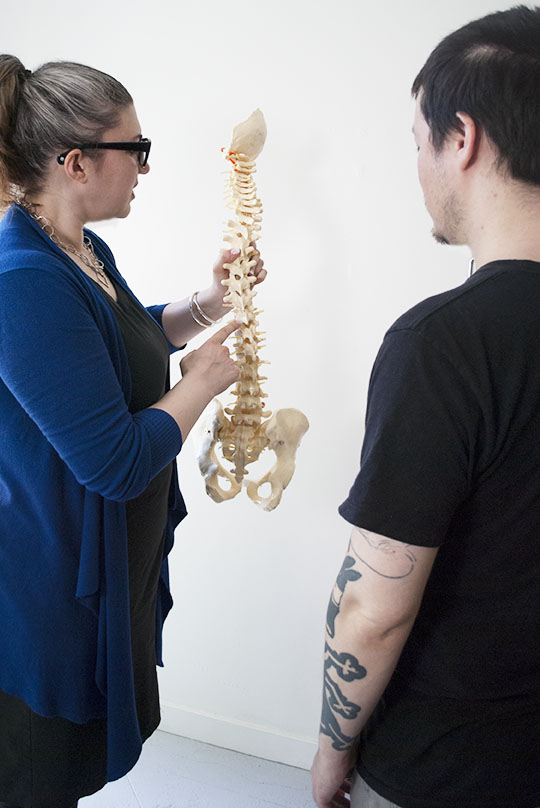SERVICES
What to expect
New to chiropractic care and wondering what to expect? Most patients report a sense of well-being after experiencing an adjustment. In fact, they are often eager to return for the multiple visits required to retrain their spines.
Newborns, infants, children, seniors and even back surgery patients can be adjusted. Naturally, adjustments are tailored to your size, age and particular health issue.
Find out for yourself by scheduling a no-obligation consultation to discuss any challenges.
If an examination reveals reduced range of motion, loss of normal spinal curves, or mechanical restrictions, chiropractic care should be considered.
After a complete explanation you’ll receive a care program designed for your unique spinal issues.
Specific chiropractic adjustments can help correct spinal joint dysfunction created by the various chemical, emotional and physical stresses in our lives.
You will be on your way to a better quality of life!



Services & Techniques
Kids/Pediatric Chiropractic
Children respond very well to subtle chiropractic adjustments. The nervous system is only allowed to be restored to its full potential when stress is reduced. This enables the body to heal. For a free 15-minute consult to see if your child can benefit from paediatric chiropractic, please call 604-440-1725.
Diversified Technique
Diversified technique is the most common chiropractic approach. Sometimes it is a specific, highly-accurate thrust done with both hands or at times, a slow, constant pressure is used. Several areas may be adjusted, or just one. Sometimes a popping sound is heard, and this is totally normal. Every patient is different, so the treatment varies depending upon need.
Integrator (TRT) with Torque Release Technique
The IntegratorTM is the only chiropractic adjusting instrument that was developed from a randomized clinical trial. This instrument, also known as the Torque Adjustor, is unlike other hand held instruments. The Integrator has a true force adjustment, and is highly specific and very low impact to the patient in terms of improved feeling of wellness and wellbeing. Upon receiving a torque adjustment, it is not uncommon for patients to report being able to see more clearly, feel lighter, increase clarity of mind, as well as feel more balanced overall.
McKenzie Protocol
McKenzie Protocol is used on patients who simply cannot tolerate an adjustment due to difficult discomfort, or a variety of other factors. This protocol is steeped in research from the McKenzie Institute, and it serves as another approach to treating patients with abnormal back and neck challenges.
Ergonomic Reviews
The modern work life can create some challenges for the human body. If you are experiencing discomfort and suspect your workspace is the culprit, why not have an assessment done by a qualified chiropractor? No one knows the anatomy, biomechanics as well as the body’s reaction to space and time like a chiropractor. If your workspace could use a review, please email or call to book a free consult of your workplace.
Active Release Technique
ART is a specialty that can help patients with specific soft tissue challenges. These challenges may result in chronic issues that hinder day-to-day functionality. Certified ART providers have the know-how and to combine what we know of chiropractic knowledge of anatomy and biomechanics to treat soft tissue disorders quickly.
TMJ Treatments
TMJ syndrome is pain in your jaw ranging from localized pain, stiffness in the jaw, limited range of motion, locking, clicking or blurred vision. Symptoms may include neck pain, sinusitus, sleep apnea, and many more. Treatments include gentle but effective adjusting as well as intra-oral muscle release to restore balance in the jaw. With regular chiropractic TMJ treatments your pain is drastically reduced in addition to co-treatment with a dentist or orthodontist.
Frequently Asked Questions

How safe is it to be adjusted?
Very safe! A New Zealand government study found that adjustments are “remarkably safe.” Chiropractic care enjoys an excellent track record, and is a relief-upon way of getting treatment. A thorough exam can identify the rare person for whom chiropractic care might be unsuited. http://www.chiro.org/LINKS/
How many adjustments do I need?
The number of adjustments varies with each patient and their individual health goals. Many patients sense some progress within a week or two of frequent visits. Visits are less often as your spine stabilizes. In difficult cases, complete healing can take months or even years. However, regular optimization visits are recommended even if you’re “feeling fine”.
What does “subluxation” mean?
The term “subluxation” means that there is an area of the spine that is not functioning properly due to the nerves that go to that area having some sort of interference, and can be detected on areas of the spine. Very similarly to when a garden hose is stepped on, you can expect that there is going to be decreased output, which in the body, it can mean anything from headaches, local pain in any area: essentially you’re not able to function as optimally as before. So this is why we get our spines checked by a chiropractor, as chiropractors remove nerve interference. Why do we need proper functioning nerves? Nerves tell every muscle and every tissue what to do, so if the nerves are firing properly and optimally, this sets the body up for success in strengthening everything from cognitive function, to being able to prevent illness, and basically living the life you want without limits through regular check-ups.
Why would you adjust a newborn?
Adjustments are gentle. Knowing exactly where to adjust, and your chiropractor applies no more pressure than the pressure you would put on by pressing on your eyeball. Children respond beautifully and quickly to chiropractic.
But I've gotten used to back pain–isn't this normal as part of getting older?
Pain of any kind, at any age, is a sign that something isn’t right. Pain functions as an alarm system, and your brain is telling your body through these alarm signals that a limit has been reached or a problem has developed. Since the body and brain are always on the side of life, this pain is to tell us “please do something about this!”. Our bodies are amazing in that we don’t have to “tell it” to heal, it just does what it can so we can adapt—minor aches and pains are often shrugged off. Similarly, when you have a pebble in your shoe: while you it may be very irritating for the first while, the body and brain adapt and develop a “new normal”, even though there may be sacrifices being made to other parts of the body. While aches and discomforts may go away, if the underlying problem remains unattended, the problem can slowly worsen until it becomes more difficult and expensive to resolve.
Can I be adjusted “too much”?
No. Only the spinal joints that are “locked up” receive adjustments. The occasional spinal joints that move too much, are passed over so weakened muscles and ligaments can stabilize and heal.
What about self-adjusting, isn't it the same thing?
No. Some people can make their joints “pop” but that’s not an adjustment! Adjustments are specific and take years to master. Those who are self-adjusting are not targeting the joints that need to be adjusted, it’s typically the joints that may already loose. Even your chiropractor must consult a colleague to benefit from chiropractic care.
What does it feel like to be adjusted?
Most patients report an immediate sense of well-being or a feeling of calmness. Since repeated adjustments are necessary, if adjustments didn’t feel good, patients wouldn’t return to finish their care. Chiropractors are experts at making adjustments feel good.
Can I continue getting adjustments after back surgery?
Yes. Rest assured that we will avoid the surgically modified areas of your spine. However, surgery may produce compensation reactions either above or below the involved level. If necessary, these other areas will be the focus of your chiropractic care
offices
Bay Wellness Centre
555 West Georgia Suite 100
Vancouver, BC V6B 1Z6
Modern Holistic Chiropractic
302-1037 West Broadway
Vancouver, BC V6H 1E3
Office Phone:
604-440-1725
Email: marcia.halajeski@gmail.com
